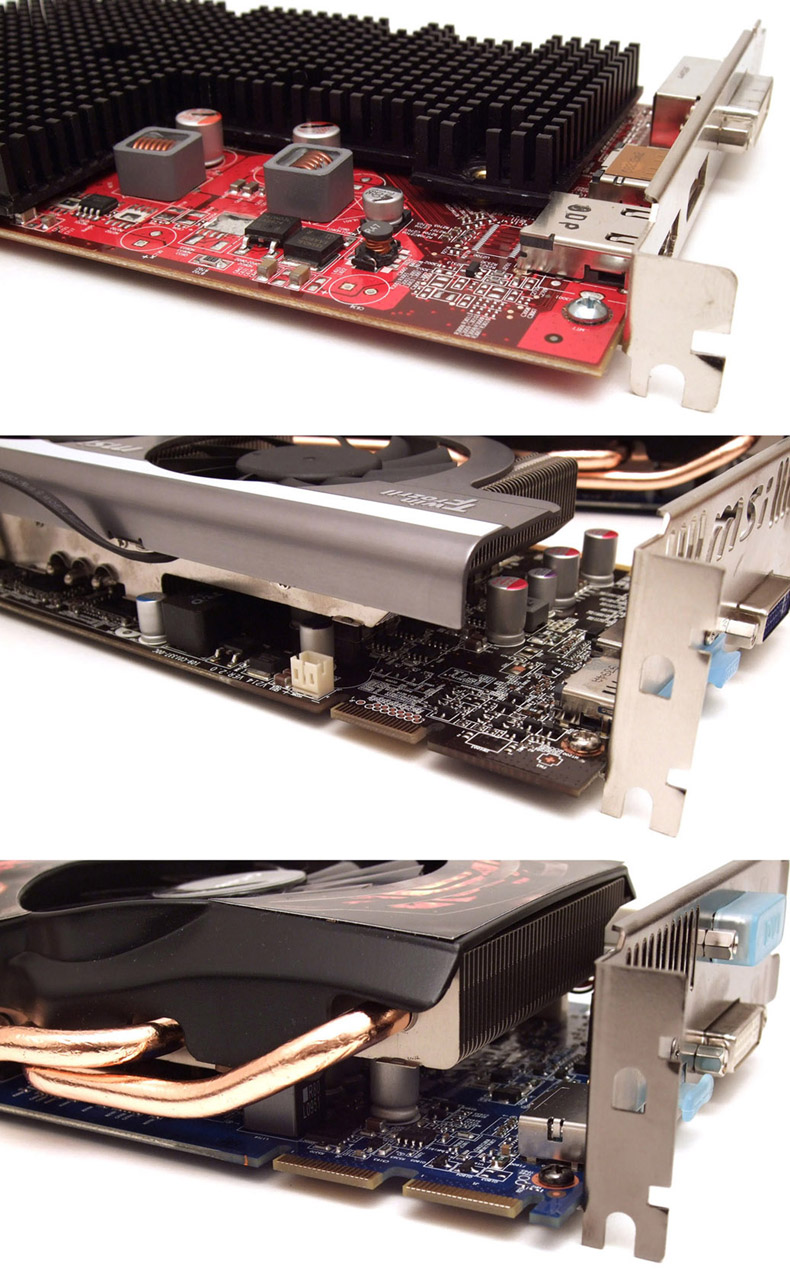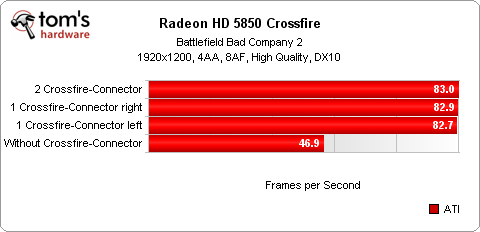Multi-GPU Setups: The Basics Of CrossFire And SLI
Motherboards with multiple PCIe slots are becoming the norm these days, and the trend is being fueled by multi-GPU configurations. Configuring Nvidia's SLI and AMD's CrossFire technologies is easy, but how much more performance can you expect from them?
Connectors
Each card has a number of physical connections determining the number of cards that can be coupled. The CrossFire and SLI solutions are pretty much identical in this aspect.
While the current Nvidia drivers allow for SLI to work without the bridge connector, this puts some additional stress on the PCIe bus. If the cards have one connection each, two cards can be connected. If they have two, three or four cards can be teamed up using a three-way bridge connector or a four-way bridge connector.
The advantages of connecting cards with bridges have to be considered separately for AMD and Nvidia. You could easily leave the bridge connector off when using mainstream graphics cards, since the PCI Express bus is quick enough for the data traveling over it. This is only an option for certain AMD-based configurations, from a pair of Radeon HD 4650s down to two Radeon HD 4350s. Dip down into the Radeon HD 3000-series or up to Radeon HD 4670s, and you'll need to use bridge connectors.
If the graphics card has two CrossFire bridge connections, it doesn't matter if you use the left or the right one. Nor are there any advantages to using multiple bridge connectors between the cards just because you can. One is enough to synchronize the data stream and make the driver recognize the CrossFire configuration.
Get Tom's Hardware's best news and in-depth reviews, straight to your inbox.
Current page: Connectors
Prev Page Driver Installation On AMD Cards Next Page The Difference Between PCIe x8 And x16-
ramcrazy360 It's great to know there's so little difference between 8x and 16x preformance even with a 5850! I was worried about having a bandwidth issue with two 5770s, but it seems that won't be a problem.Reply -
Maziar Great review,however i wish you tested on resolutions like 2560x1600 and higher,because i think the main difference between 8x and 16x is in resolutions like that.Reply -
wildeast same as ramcrazy,Reply
i was going to get an i5 but that means a p55 mobo (x8+x8) not x58 (x16+x16), so i thought i should be getting x58 and i7 rig which is beyond my savings, thnx tom's am getting i5 + p55 now :) -
Tamz_msc Very nice article.It cleared a lot of confusion in my case.I would have liked to see scaling with increase in the number of CPU cores.Reply -
ruffopurititiwang Great article! Now we know what the deal is regarding multi-gpu and PCI-E lane speeds with mainstream setups.Reply
Now how about showing some love for top of the line setups? Can you apply the same tests to GTX 480/ATI 5870 Multi-gpu configuration + X58 mobo & 980X proc? -
rohitbaran On page 7, performance of Radeons in Alien vs Predator is not arranged properly with CPU speed.Reply -
lothdk rohitbaranOn page 7, performance of Radeons in Alien vs Predator is not arranged properly with CPU speed.Reply
All the tests are arranged by GPU performance not by CPU speed. -
TheStealthyOne I'll definitely be using this article as a reference for a dual 5850 machine I'm building :)Reply -
hixbot In every single TOMS article showing benches on CPU scaling, you use High resolutions with FULL AA and aniso! WHY?!Reply
I know thats how many would play the game, and it shows the performance that one would expect with different CPUs. It shows that we don't need to overclock or buy expensive CPUs, when the load (bottleneck) is on the GPU.
BUT if you would also show the CPU scaling in low resolutions and no AA/aniso, we could see how the CPUs might stack up. This is valuable for knowing how the CPUs perform in the future, when one might have upgraded the GPUs, and the bottleneck dissapears.
Yeah, yeah, this is not a CPU article... i know but still.. it shows CPU scaling, and every time I see CPU scaling demonstrated on toms, it's shown with a bottleneck on the GPU.
Humour us next time and include a bench or two with no GPU bottlneck (low res, eye candy). Just becaause that's not how we'd play the game, and just because the FPS would be insanely high, doesn't mean the numbers wouldn't be valuable. I complain about this in every article that includes CPU scaling.
It doesn't erk me that much here because this article isn't focused on CPUs. but for the love god, the next CPU article you do, when you test gaming, throw a bench or two in there with very low settings.

